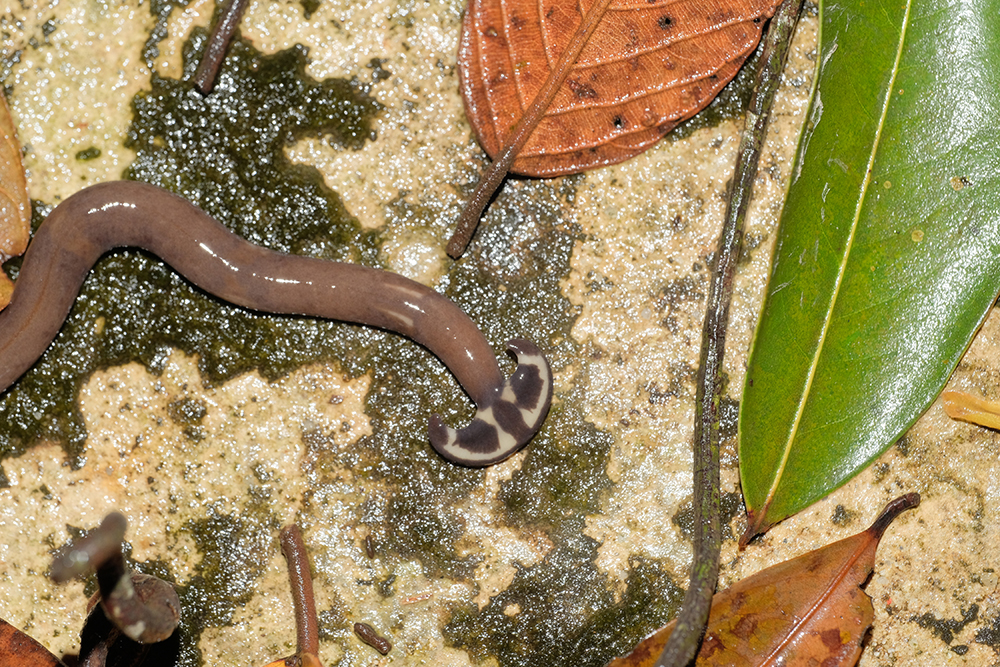
Hammerhead Flatworms Spotted in Harris County: What Homeowners Should Know About This Invasive Species
After weeks of steady rain and muggy Gulf Coast weather, Harris County residents are reporting a rise in hammerhead flatworm sightings across neighborhoods, gardens, and sidewalks. The uptick mirrors increased activity across Southeast Texas, where the invasive species is flourishing in wet, warm conditions.
Hammerhead flatworms (Bipalium kewense), originally from Southeast Asia, are not new to Texas, but their growing numbers are causing concern for environmental experts and homeowners alike. These nocturnal flatworms are especially active after rainfall, slinking out from their hiding places under mulch, leaf litter, and rocks to feed—primarily on earthworms.
According to the Texas A&M AgriLife Extension Service, hammerhead flatworms are more than just an eyesore. “They are voracious predators of earthworms, which are critical to soil health,” the Extension Service notes in its guidance. Earthworms naturally aerate soil, increase nutrient cycling, and support plant growth—making them a vital part of healthy home landscapes and ecosystems.
By preying on these helpful invertebrates, hammerhead flatworms can disrupt the delicate balance that gardeners, landscapers, and local environments rely on. Compost piles, vegetable gardens, and flower beds are all vulnerable.
Mobile Sidebar Ad
What to Look For
Hammerhead flatworms have a distinct and somewhat startling appearance. Their narrow, flat bodies can stretch from 8 to 15 inches long, and they are usually tan or light brown with dark stripes along their back. Their defining feature is a flattened, half-moon shaped head resembling that of a hammerhead shark—hence their name.
They are typically seen at night or in the early morning hours, especially after rain, when conditions are damp and cool. Residents have reported seeing them crawling on driveways, patios, and garden soil throughout the Greater Houston area.
Don’t Touch—And Don’t Chop
Despite their slow, slimy movements, these flatworms are not harmless. The Texas A&M AgriLife Extension Service warns that hammerhead flatworms secrete a neurotoxic chemical through their skin—one that helps subdue earthworms but can also irritate human skin and harm pets if ingested.
In addition to their chemical defenses, these worms reproduce through fragmentation. That means if one is chopped into pieces, each piece can regenerate into a new worm—making common disposal methods like squishing or cutting ineffective and counterproductive.
Safe Disposal: What Harris County Residents Can Do
If you come across a hammerhead flatworm, proper disposal is critical. Here’s how to handle them safely:
-
Wear gloves, or use a stick or paper towel to pick up the worm.
-
Place it in a sealable bag with salt, citrus oil, or a vinegar concentrate.
-
Freeze the bag for a few days, then dispose of it in the trash.
You can also spray the worm directly with a vinegar or citrus oil solution, but make sure the worm is fully immobilized before sealing and discarding.
Mobile Sidebar Ad
Help Scientists Track the Spread
The hammerhead flatworm has been found in numerous Texas counties—including Houston, Austin, the Gulf Coast, and Central Texas—and community reports play a crucial role in monitoring its spread.
The Texas Invasive Species Institute urges residents to document and report sightings by submitting photos through their reporting portal: tsusinvasives.org/home/edrr/reporting.html.
Hammerhead flatworms were first documented in U.S. greenhouses over a century ago but have increasingly taken root in natural habitats. Other invasive species in the Bipalium genus, such as Bipalium vagum, have also been confirmed in the Houston area and carry similar environmental risks.
For ongoing updates on home gardening tips across Harris County, stay connected with My Neighborhood News.
 Tiffany Krenek has been on the My Neighborhood News team since August 2021. She is passionate about curating and sharing content that enriches the lives of our readers in a personal, meaningful way. A loving mother and wife, Tiffany and her family live in the West Houston/Cypress region.
Tiffany Krenek has been on the My Neighborhood News team since August 2021. She is passionate about curating and sharing content that enriches the lives of our readers in a personal, meaningful way. A loving mother and wife, Tiffany and her family live in the West Houston/Cypress region.

